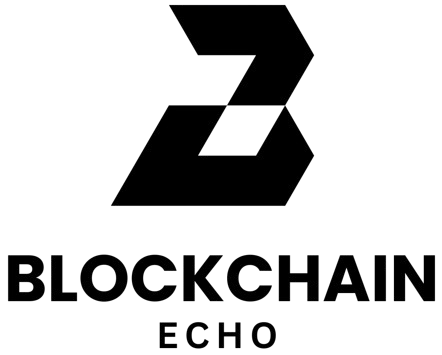Bitcoin’s ledger has been public from day one, while the Federal Reserve, despite more than a century of dominance, has never faced a full audit. Why?
Summary
- Bitcoin has finalized over 900,000 blocks and 1.2 billion transactions since 2009, creating an uninterrupted, publicly auditable financial record.
- The Federal Reserve, despite 112 years of global influence, has never faced a full independent audit, keeping emergency lending and swap line details largely hidden.
- Bitcoin’s “don’t trust, verify” principle enforces its 21 million supply cap, with every unit traceable to its creation block, while the Fed relies on selective disclosures and press guidance.
- Regulators leverage Bitcoin’s open ledger to track billions in illicit funds, while the Fed’s crisis interventions, such as $29 trillion in 2008 lending, only became known years later.
- The transparency gap fuels calls for alternatives, with BRICS nations and over 130 central banks exploring digital currencies as trust in the dollar’s opaque governance wanes.
Bitcoin’s self-auditing record
Bitcoin (BTC) is often described as a peer-to-peer digital currency, but one of its most overlooked qualities is that it audits itself.
Every 10 minutes, the network finalizes a new block of transactions, secured by proof-of-work and validated by thousands of independent nodes across the globe.
Since January 2009, this has created an uninterrupted public record that now spans more than 900,000 blocks and includes close to 1.2 billion transactions. Anyone with an internet connection can verify the data in real time, with no permission required.
The U.S. Federal Reserve, by contrast, is more than a century old and has never undergone a full independent audit. Established in December 1913, the Fed became the backbone of the U.S. financial system, managing interest rates, monetary supply, and economic stability.
It regularly publishes policy minutes, balance sheets, and financial statements, but its inner operations, such as details of emergency lending, foreign currency swap lines, and interactions with private banks, remain closed to outside scrutiny.
The contrast is distinct. Bitcoin, a 16-year-old network, has made its entire financial history publicly accessible from day one. The Fed, a 112-year-old institution controlling the world’s largest economy, has never exposed itself to the same level of examination.
How Bitcoin verifies itself
The idea of Bitcoin as a continuously audited system is a byproduct of its open-source design.
Every participant in the network has the same ability to verify the rules, eliminating the hierarchy of information that often exists in banking, where insiders hold privileged access and the public sees only what regulators release.
Running this system is the concept of full nodes, which act as independent referees. A node does not need special licensing or political approval. Anyone can run one on consumer hardware, and doing so gives them a complete copy of the Bitcoin ledger.
This “don’t trust, verify” principle ensures that Bitcoin’s supply cap of 21 million coins is enforced without requiring blind confidence in an authority.
Every newly mined block contains a known quantity of freshly minted bitcoin, which halves approximately every four years in what is known as the halving cycle.
From the first reward of 50 BTC per block in 2009 to the current reward of 3.125 BTC after the April 2024 halving, every unit of currency in circulation is traceable to the block in which it was created.
Blockchain analytics firms such as Chainalysis, Elliptic, and Glassnode have built entire businesses around monitoring and interpreting Bitcoin’s open ledger.
Regulators have also used the network’s transparency to track criminal activity. In 2021, for example, the U.S. Department of Justice recovered 63.7 BTC paid as ransom in the Colonial Pipeline cyberattack by following wallet addresses on the blockchain.
The reliability of this audit rests not only on transparency but also on redundancy. Copies of Bitcoin’s ledger exist in multiple geographies, from Europe to Asia to South America.
Even if governments shut down exchanges or data centers in one region, the same information remains accessible elsewhere, ensuring that the audit process is not just constant but also resistant to censorship.
The Fed’s global role
The Fed occupies a unique position in global finance. While it sets monetary policy for the U.S., its influence extends far beyond national borders.
The dollar accounts for about 58% of global foreign exchange reserves according to the International Monetary Fund, and nearly 90% of global trade transactions involve the U.S. dollar in some form.
With that level of influence, the Fed’s transparency becomes not just a domestic issue but an international one.
The Fed does publish regular reports, such as its weekly H.4.1 balance sheet release, the Beige Book summarizing economic conditions, and detailed minutes from Federal Open Market Committee meetings.
It also releases audited financial statements each year, reviewed by outside firms, providing insight into assets, liabilities, and income.
However, these disclosures only cover surface-level operations and leave many of the central bank’s most powerful tools outside of independent scrutiny.
Emergency lending programs are one example. During the 2008 financial crisis, the Fed created facilities that lent trillions of dollars to domestic and foreign banks.
The Levy Economics Institute later estimated that total support exceeded $29 trillion when measured cumulatively across programs. Yet details of these interventions only became public years later, after lawsuits and congressional pressure forced disclosure.
Similar secrecy surrounded the Fed’s extensive use of foreign currency swap lines, which allowed foreign central banks to borrow dollars at the height of global liquidity stress.
Calls for greater openness have come repeatedly. Congressman Ron Paul introduced the “Audit the Fed” bill in 2009, which passed the House but was stripped down before becoming law.
Senator Rand Paul revived the effort in 2015, but it again failed in the Senate. The Fed has consistently opposed these efforts, with officials arguing that complete transparency could politicize its decisions and undermine its independence.
Former Fed Chair Ben Bernanke warned in 2010 that subjecting monetary policy deliberations to audits could “seriously threaten the independence of monetary policy and the stability of the financial system.”
The result is what some economists call “selective transparency.” The Fed discloses enough to maintain credibility and inform markets, but keeps the most sensitive details shielded from public view.
Why the divide matters
The difference in transparency between Bitcoin and the Fed influences markets, regulation, and public accountability in ways that directly affect market behavior.
For example, Glassnode data shows that in 2023, coins held for longer than one year accounted for over 68% of Bitcoin’s circulating supply, a metric used to assess long-term investor conviction.
Unlike Bitcoin, where on-chain data offers a direct view of holder behavior, no comparable statistic exists for the U.S. dollar supply, since central bank disclosures focus on broad aggregates rather than individual actions.
Instead, the Federal Reserve relies on a model that creates the opposite dynamic. Monetary policy is revealed through announcements and press conferences, and market participants respond to guidance rather than verifiable data.
Traders wait for the release of the dot plot every quarter to interpret the Fed’s interest rate outlook, even though the projections are only the opinions of committee members, not binding commitments.
The gap between expectation and reality can move global markets by trillions of dollars within minutes, showing how much weight is placed on selective communication rather than direct visibility.
Regulation is another area where the contrast matters. Since Bitcoin’s ledger is fully open, regulators worldwide have leveraged blockchain for compliance.
Chainalysis reported that in 2023, U.S. authorities seized over $3.4 billion in Bitcoin linked to criminal cases, largely by tracing transactions on-chain.
In contrast, the Fed’s dealings with troubled institutions during crises, such as its overnight repo market interventions in 2019, were initially opaque. Only aggregate figures were available at the time, and the identities of banks tapping the facility remained undisclosed.
The credibility gap also influences international relations. Countries that rely heavily on the dollar for trade or reserves must accept the Fed’s decisions without access to its full playbook, fueling interest in alternatives.
The BRICS bloc has discussed reducing dependence on the dollar, while central banks in over 130 countries are experimenting with digital currencies, according to the Atlantic Council’s 2025 CBDC tracker.
The transparency gap matters because it shapes how people define fairness in finance. Both approaches have worked in their own ways, but the contrast has become sharper as digital systems redefine what financial accountability looks like.


